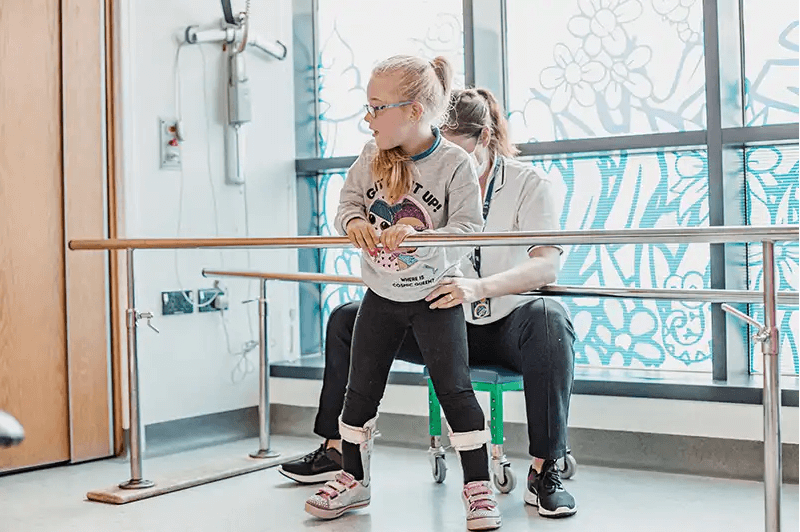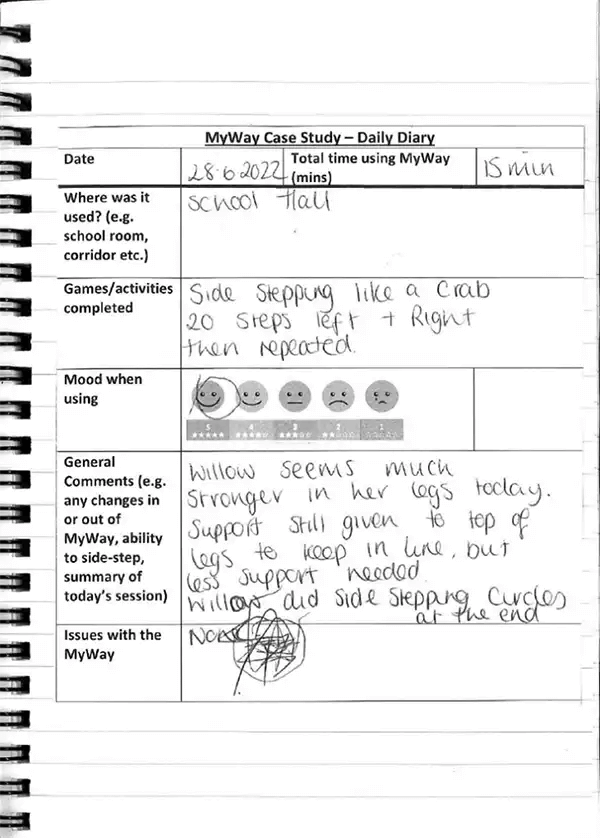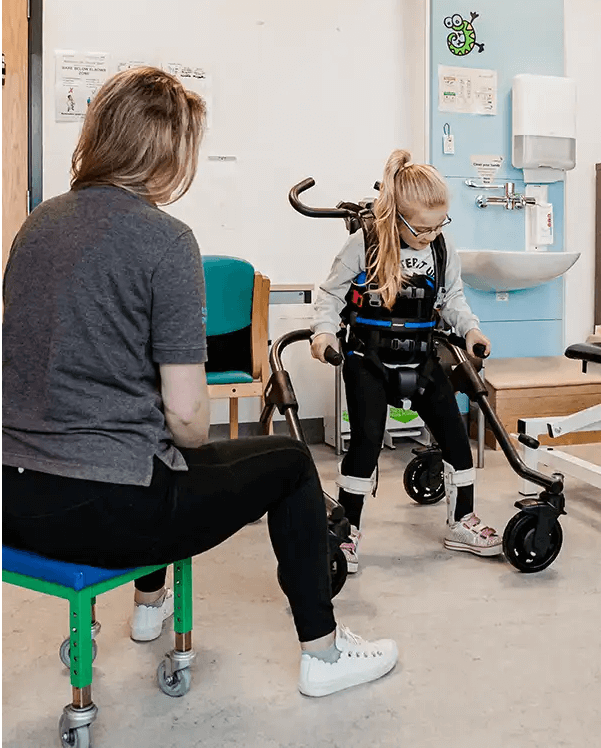Teilen:
Take it offline!
This Education in Motion resource is also available as a printable PDF.
Download PDF
Willow is a funny and chatty 7-year-old girl. She loves playing with her large collection of dolls and also enjoys cuddling with her family on the sofa, eating lots of popcorn during movie nights. She looks forward to seeing her friends at school and doing lots of fun things outside and inside the classroom.
Willow has Cerebral Palsy (GMFCS III). This means that she mainly uses her manual wheelchair to get around, but can walk with a low-support posterior walker over short distances. However, Willow has some muscle weakness, especially around her hips, which means that she can sway from side to side when using her walker and can tire quite quickly from mobilizing. She also has lower tone in her trunk, which means she needs to work harder to keep herself upright.
Goals
Willow is working hard on her hip muscle strength in therapy sessions, at home, and at school, but can find it challenging. In therapy sessions, she works with her physical therapist on activities such as side-stepping in the parallel bars but needs hands-on guidance to achieve the correct movement. Her physical therapist thought using the side-stepping feature of the Leckey MyWay+ would enable Willow to work on her muscle strength independently while being properly supported by the chest harness.

Assessment
When her physical therapist looked at the strength of her hip abductor muscles (the muscles that bring her legs out to the side), she found that Willow struggles to fully isolate the movement. When she was lying on her side, she struggled to keep her top leg straight while lifting it up, tending to bend her knee and hip forward while doing so. This is because the muscles at the front of her hips (hip flexors) were stronger than her hip abductors. For children with CP, muscle weakness, especially in the hip abductor muscles, has been found to have an impact on walking ability, ability to transfer in & out of equipment, and also possibly development of the hip joint. When timed to see how long she could keep her leg in the air, she was able to hold her right leg up for four seconds and her left leg for 11 seconds.
When seeing how quickly she could side-step from one side of the parallel bars to the other and back again, she could do this in 28 seconds. However, when she was doing this, she tended to want to face backwards rather than sideways because of the muscle imbalance between the muscles at the front and side of her hips.
As well as having some weakness in her hip abductors, Willow has some weakness in her quadricep muscles (the muscles that help straighten her knees). This means that standing straight, without letting her knees bend, can be quite tricky. When times how long Willow could do tohis for, she managed two seconds before she became tired and needed to bend her knees.
Intervention
Willow used her MyWay+ at school over seven weeks with guidance from an adult to encourage her to achieve a good standing position, and also to help her play lots of fun side-stepping games! A diary was completed every time she used the frame to keep track of her progress. Here is an example of a completed diary entry:

Review
When reviewed by her physical therapist, she was pleased to find that Willow had improved in her hip muscle and quadricep strength. When timed to see how long she could keep her leg in the air, her right leg only improved slightly (five seconds), but her strength and control on her left had improved significantly and she could now hold it much straighter for 18 seconds.
When practicing in the parallel bars, her physical therapist initially commented how much straighter she looked just standing, whereas before she would have found it difficult to take a lot of the weight through her legs. When she was timed again to see how quickly she could get from one side to the other and back, this time she did it in 19 seconds and didn't try to face forwards once!
Finally, when seeing how long she could stand with her knees straight before letting them bend, she had also improved and now as able to stand confidently for 20 seconds before needing a rest!
Overall
- Improved hip abductor strength, left more than right
- Timed hip abduction hold improved on left side from 11 to 18 seconds
- Side-stepping to the right had improved due to improved left hip abductor strength (more stability on left side led to being able to step out better with right leg)
- Overall quality and speed of stepping improved in the parallel bars improved from 28 seconds to 19 seconds
- Posture improved in standing
- Ability to stand with full knee extension increased from two seconds initially to 20 seconds at end of intervention period

Therapist feedback
"The biggest thing is her ability to recruit her quads and stand straighter."
"I used to have to give her lots more support when side-stepping in the parallel bars, and now I don't have to give as much."
"I never normally get to stand back and really analyze her side-stepping, as I always have to have my hands on to support her."
"I like that she can really target her abductor strength while having the support of the frame."
"Using the side-stepping feature of the MyWay+ definitely supports therapy intervention."